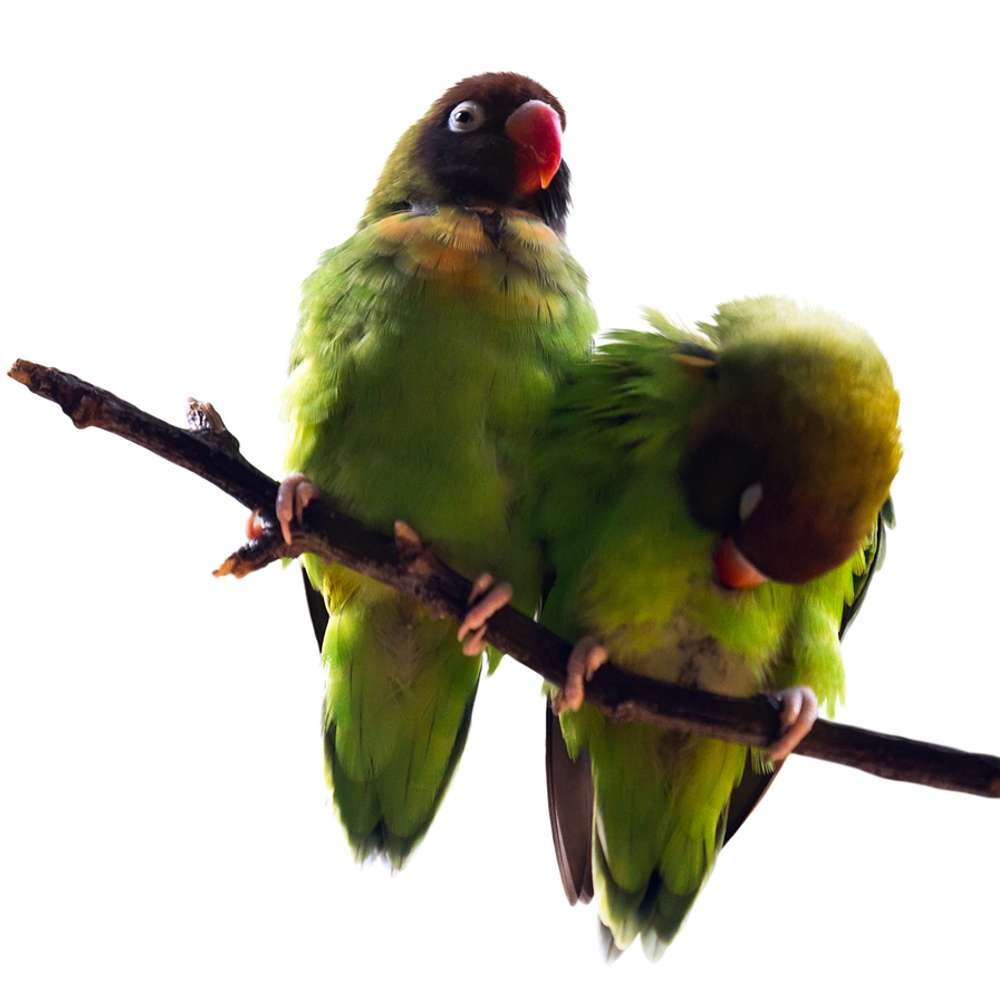Black-Cheeked Lovebird
- Agapornis nigrigenis
- IUCN Status: Vulnerable
- Trend: decreasing

- Phylum: Chordata
- Class: Aves
- Order: Psittaciformes
- Family: Psittaculidae
- Genus: Agapornis
Share:
General Information
The black cheecked lovebird is near endemic to Zambia as it can sometimes be found in a few neighboring countries.
Fun Facts!
Description
It is a type of parrot with mostly green plumage, reddish-brown forehead and forecrown, brownish-black cheeks and throat, orange bib below the throat which fades to yellowish-green, white eye-rings and grey feet. Adult have bright red beaks, while juveniles of the species are similar but with a more orange bill.
- Lifespan: 13 yrs in captivity
Ecology and Behaviour
Vocalizations are loud, piercing shrieks, which sound like the calls of other lovebirds
Diet
The black-cheeked lovebird feeds mainly at ground-level on annual grass seeds, but also on other vegetable matter and insect larvae, and on corn, sorghum, and millet.
Reproduction
Not much information is available about the breeding of these lovebirds and after they breed, three to six eggs are laid by the female and after hatching, the chicks stay with their parents for about four to six weeks.
Conservation
It is categorized by the International Union for Conservation of Nature (IUCN) red list as “Vulnerable”. It is listed as a vulnerable species as its population is in decline due to continuous habitat loss.
Distribution and Habitat
The black-cheeked lovebird inhabits deciduous woodland, where permanent supplies of surface water exist, as it needs daily access to water. In the dry season, these birds may congregate in large flocks of up to 800 or more. They are found in Zambia and may occur in Zimbabwe, Botswana and Namibia. In the dry season, these lovebirds can be spotted in large flocks. These lovebirds are known to be adversely affected or endangered by habitat loss and their habitat loss includes drying of water bodies which has led to the population of these lovebirds being endangered.
Interaction with humans
The black-cheeked lovebird is relatively easy to breed in aviculture, but there was little interest in breeding them during the first half of the twentieth century at a time when imports were numerous. Now they are uncommon in aviculture. The lovebirds are known to make manageable pets and are quite playful and entertaining
No donation to this project yet.
| M | T | W | T | F | S | S |
|---|---|---|---|---|---|---|
| 1 | 2 | 3 | 4 | 5 | 6 | 7 |
| 8 | 9 | 10 | 11 | 12 | 13 | 14 |
| 15 | 16 | 17 | 18 | 19 | 20 | 21 |
| 22 | 23 | 24 | 25 | 26 | 27 | 28 |
| 29 | 30 | 31 | ||||


